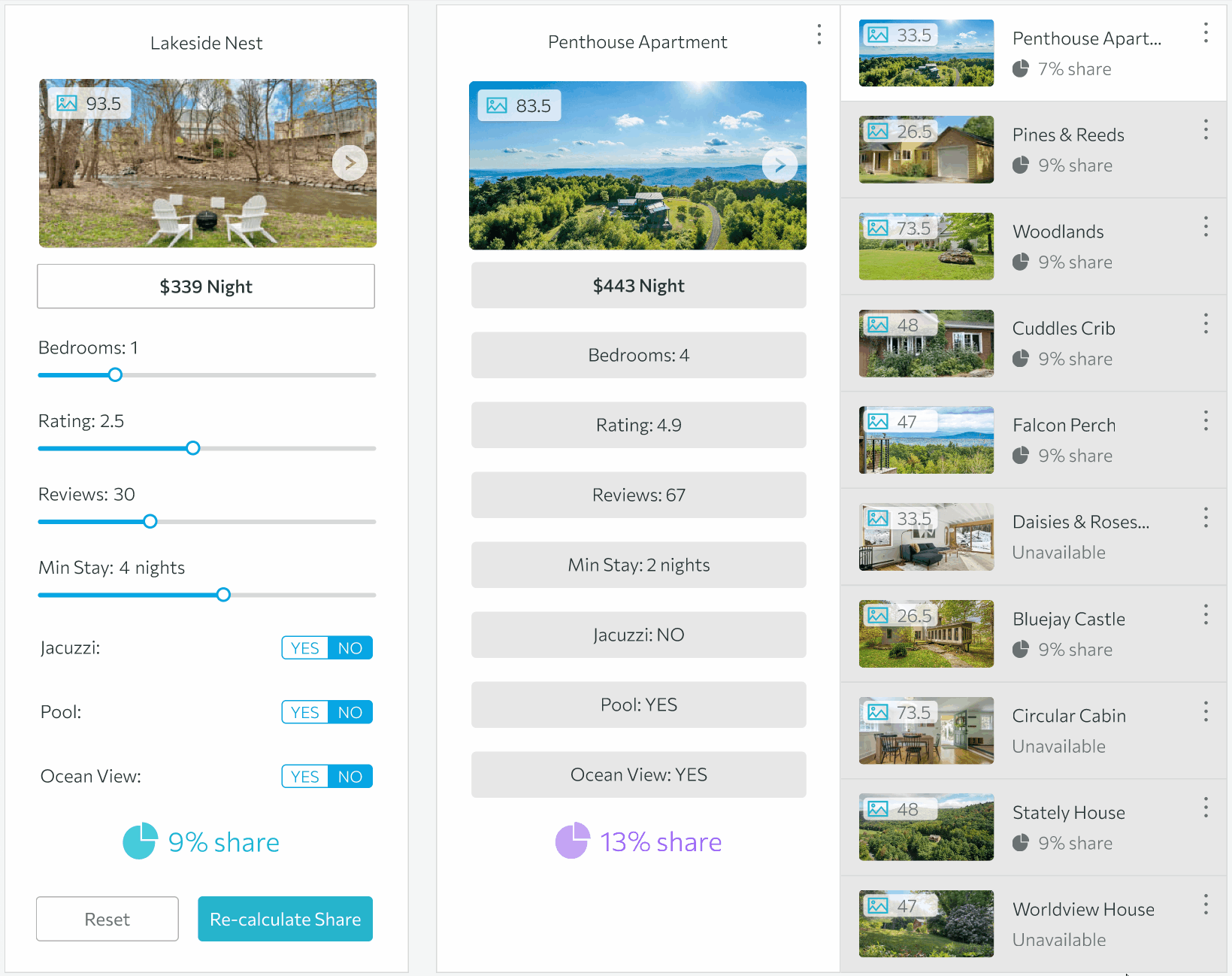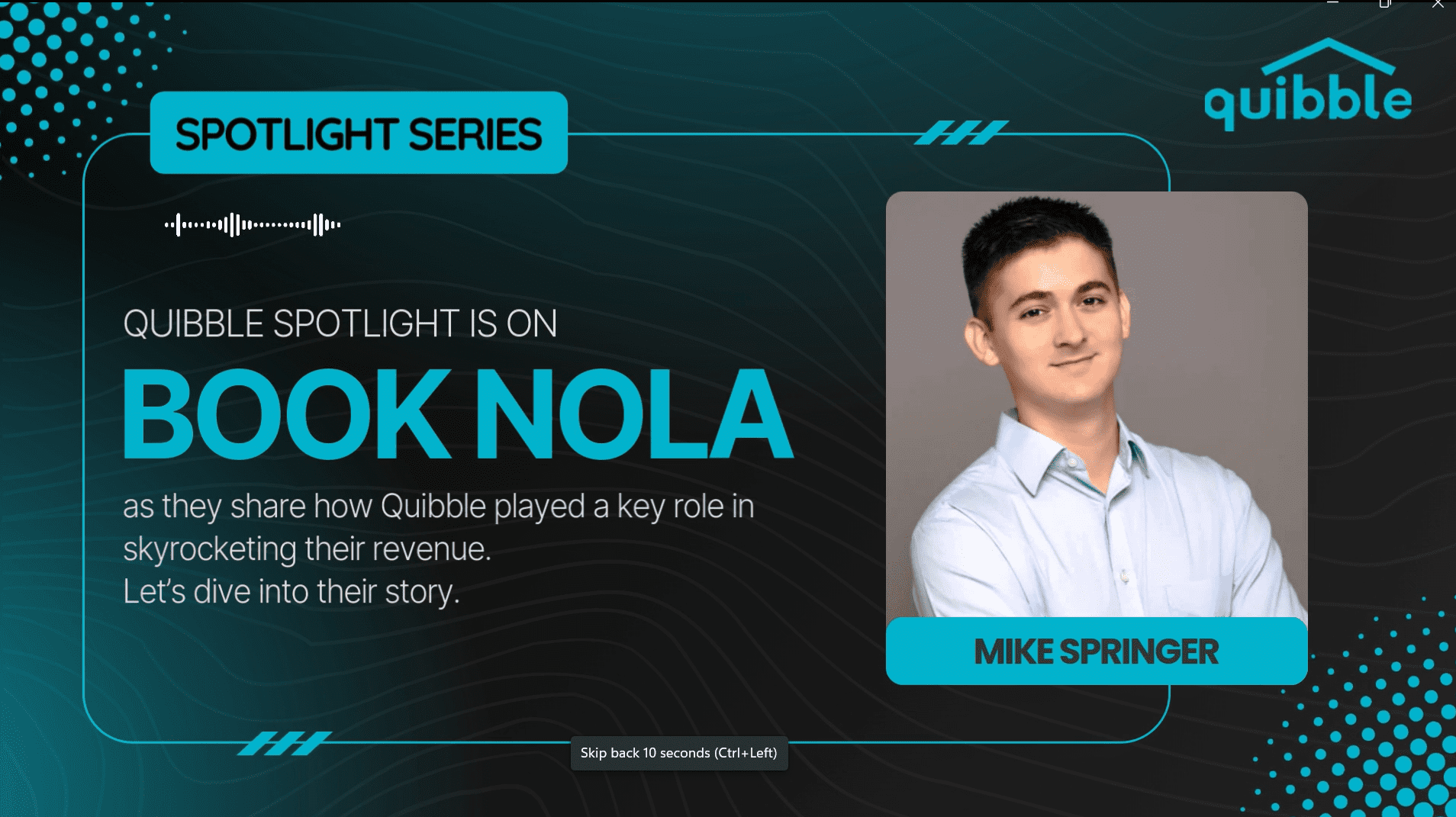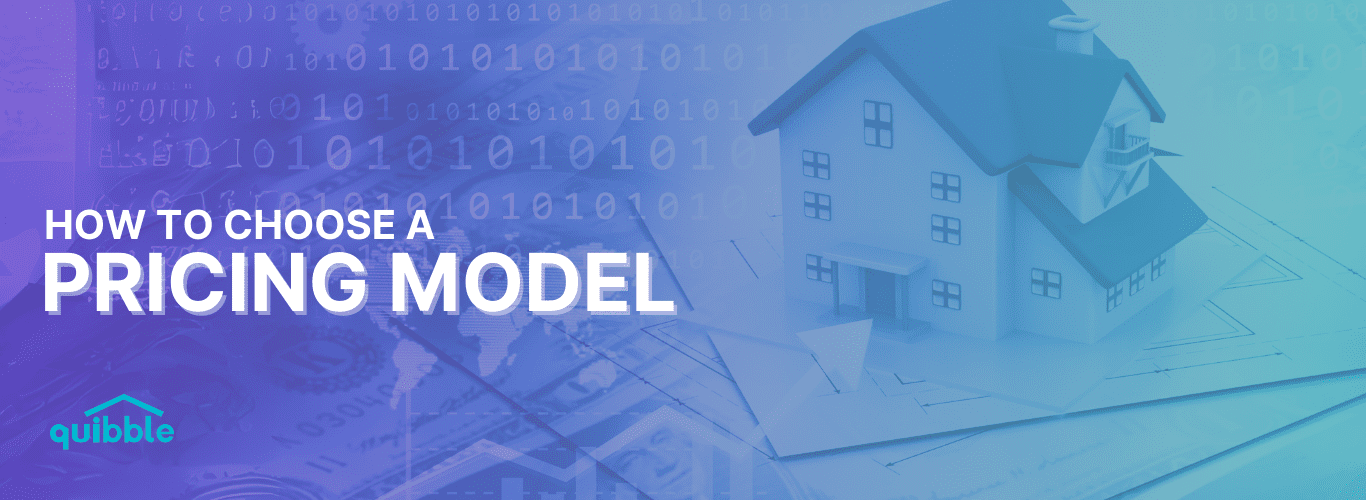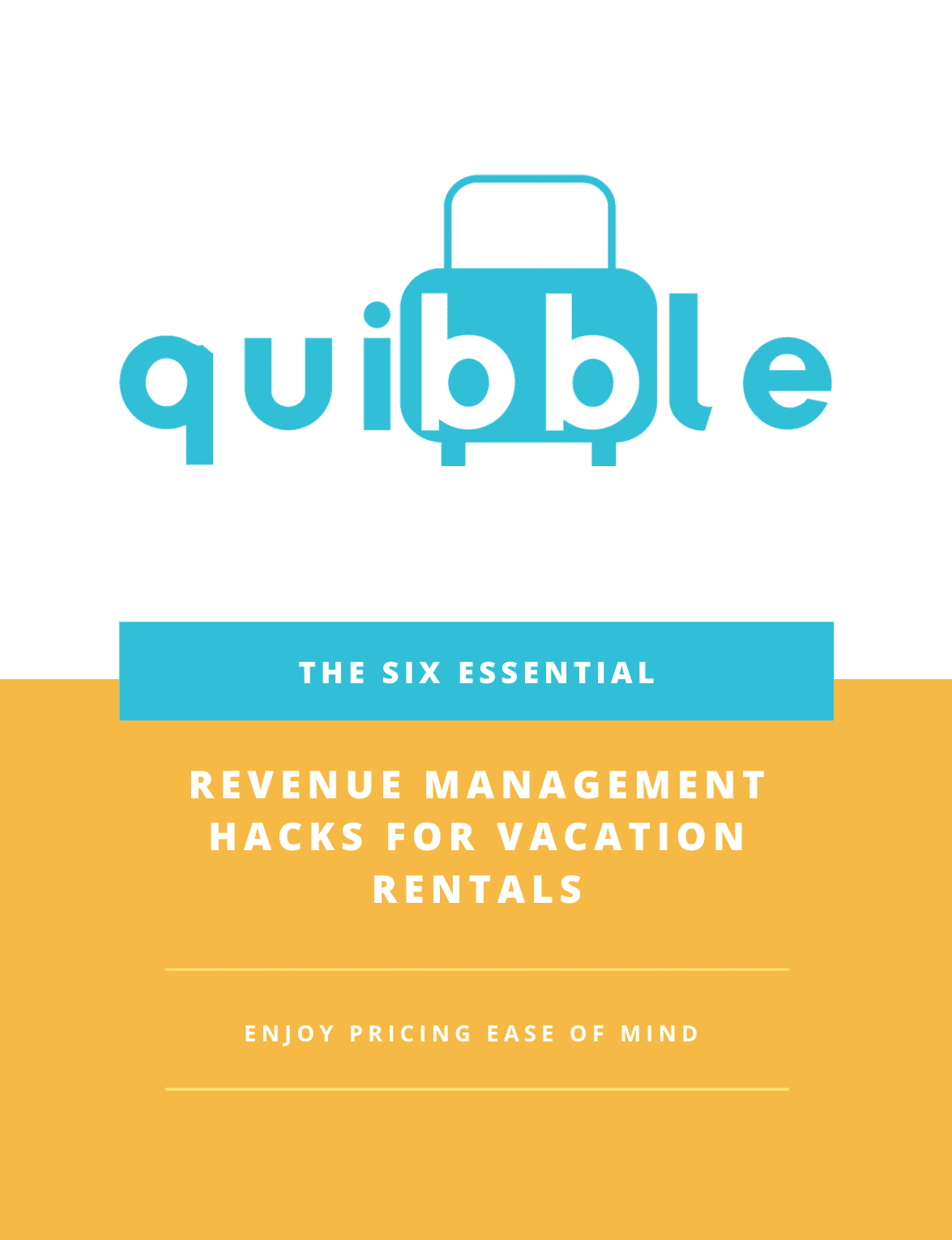What’s on this page:
Introduction
Earlier this year quibble released a groundbreaking new model for pricing short-term rental properties. I wrote about the introduction of computer vision into that model to enhance the pricing output. There was a substantial improvement to the pricing after we added this novel capability to the model and quibble is the only revenue management software that has developed this technology.
This was just the beginning for quibble. Our next launch is the development of a Natural Language Processing model that is specifically designed for the hospitality industry. The objective of the model itself is to interpret consumer sentiment from the reviews that they write. There are myriad uses for this model, but we are a pricing-focused software solution, and the primary purpose of evaluating these reviews with a computer is to enhance our pricing model.
What is NLP?
According to generative AI:
“In the context of computer science and artificial intelligence, NLP most commonly stands for Natural Language Processing. NLP is a field of study focused on the interaction between computers and human (natural) languages. The goal is to enable computers to understand, interpret, and generate human-like text or speech. NLP involves a range of tasks, such as text/speech recognition, language translation, sentiment analysis, and text generation.”
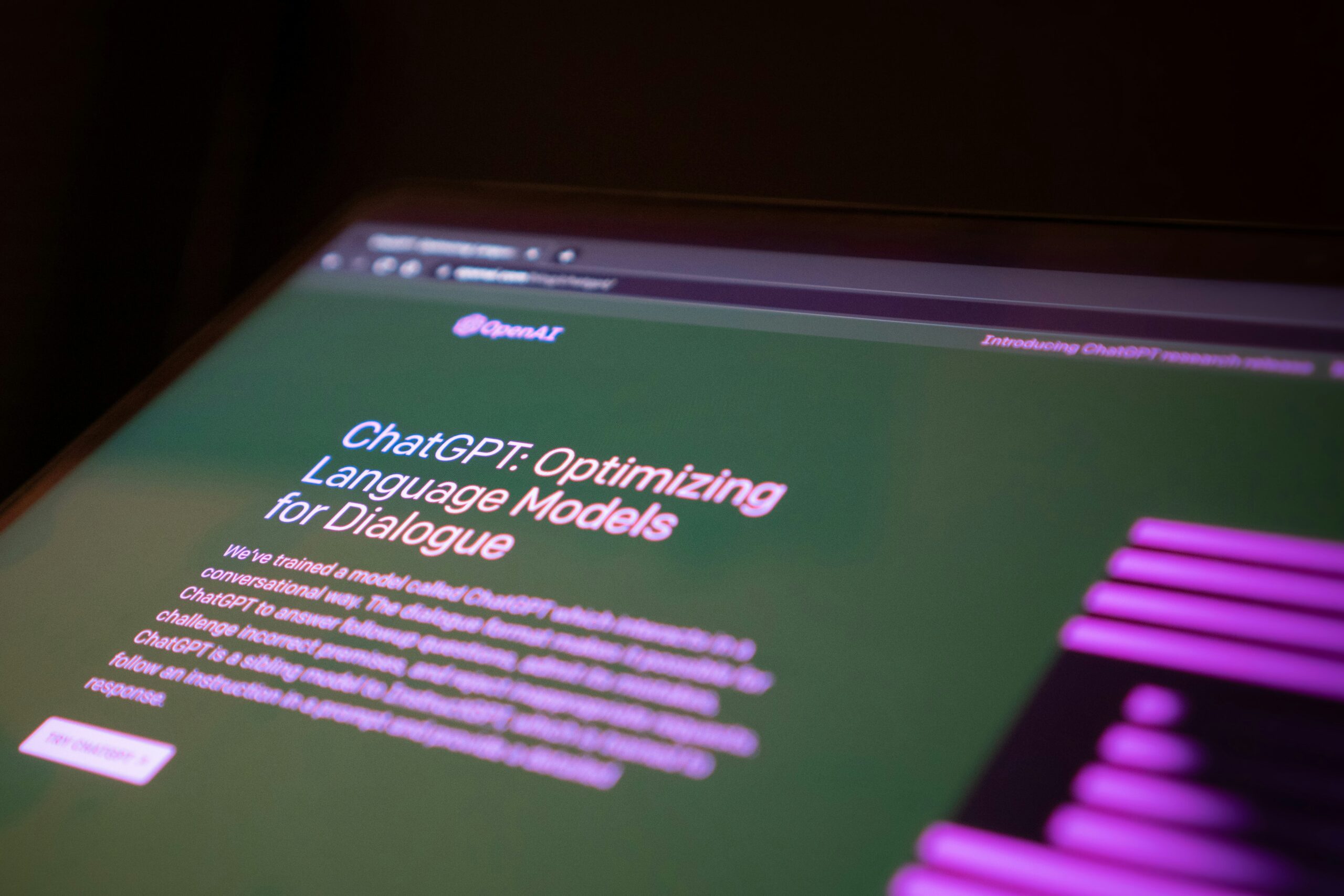
The most familiar use of NLP right now is probably ChatGTP. To get the definition of NLP in the above paragraph, I asked ChatGTP. For the model to answer my question, it had to first process what I asked it so it knew how to answer the question. Next, it had to formulate the answer. This is a pretty bad example because it is just a definition. But, you can ask more complicated questions, like how is NLP used in marketing? This is the answer:
Natural Language Processing (NLP) can be a powerful tool in marketing, enabling businesses to better understand and engage with their customers. Here are several ways NLP can be applied in marketing:
Sentiment Analysis:
-
- Purpose: Understand customer sentiment towards products, services, or brands.
-
- Application: Analyzing social media mentions, customer reviews, and comments to gauge public opinion.
Chatbots and Virtual Assistants:
-
- Purpose: Enhance customer service and engagement.
-
- Application: Implementing chatbots on websites or messaging apps to answer queries, provide information, and guide users.
Content Creation and Optimization:
-
- Purpose: Improve content relevance and SEO.
-
- Application: Using NLP algorithms to analyze and optimize website content, blog posts, and other marketing materials for better search engine rankings.
Here is an even more complicated and relevant question to this topic: Do any dynamic pricing tools for short-term rentals use NLP?
The specific use of Natural Language Processing (NLP) in dynamic pricing tools for short-term rentals wasn’t explicitly highlighted by the tools mentioned (Pricelabs, Wheelhouse, Beyond Pricing). However, technology and features within these tools can evolve, so it’s recommended to check the latest information from each tool’s official website or contact their support for the most accurate details.
Generative AI models like ChatGTP can answer these questions because they have access to the information available on the internet. But, If I were to ask it to write this content for me, it wouldn’t be able to. The specific information on how quibble has deployed NLP and used it in its pricing model does not exist anywhere on the internet. This is the first content that is referencing this novel development.
Training vs Buying a Model
The above results that were generated by AI were pretty impressive. There are now a lot of tools other than ChatGTP that are available for specific purposes such as blog writing and chatbots. These tools are designed to plug into your business and solve challenges in marketing, customer service, etc. Getting an off-the-shelf model can be extremely helpful. You can save a lot of time and energy if you purchase a model and you don’t need a data scientist to accomplish your goal.
This changes when the problem you are trying to solve is very specific. In our case, the output of the NLP model is going to feed results into our main pricing engine. So that output has a very specific meaning and needs to be very precise and very consistent. Since we had these very specific demands of our NLP model, we built and trained our model.
“Since we had these very specific demands of our NLP model, we built and trained our model.”
Training
First, we had to define the problem we were trying to solve. We want to understand the relationship between reviews written by previous guests and the chance that the property gets selected the next time it shows up in a search. Our starting assumption is that negative reviews have a negative impact on the probability of getting booked in your next search and that positive reviews have a positive impact. The data from this model feeds into the main pricing engine that predicts consumer choice behavior.

The next two steps are not as glamorous, but arguably the most important part of the whole thing. We have to collect the data we will use for the training and then we have to label or annotate the data. The most efficient way to collect the data is to build a robot that will go and visit the OTA’s and screen scrape the text from past reviews. Training sets can be pretty big, so getting this data without a robot would be extremely difficult. Data collection can be challenging, but I think the data labeling is probably the biggest deterrent to creating your model. I think the public perception of these types of models is that they are magically created by data scientists doing some incredible programming. That is only part of the story, the reality is that the data scientists need very accurately labeled data before they can do any of the magic. Data labeling is a very human task that takes a lot of time.
That work all has to be done before the model starts to get trained. Training can take some time but is not nearly as bad as data labeling. To make sure the model works properly, we kept a portion of the labeled data to validate the results. This process is iterative and we keep making tweaks until the results are acceptable. The model has to be reliably good enough that it will improve our probability estimates. If there is no improvement, we are spinning up CPUs for no reason and adding unnecessary complexity. To make sure this is the case, we have to look at a lot of output.
Pipeline and Integration
The NLP model that we built to improve the pricing model was built and trained in complete isolation from the pricing model. It is a new input that is designed to improve the pricing and choice prediction. After the model was trained, we had to build the data pipeline to collect and process the reviews that were relevant to the pricing model. These are the reviews that are associated with the property we are pricing and the competitors chosen by the IntelCompset finder.
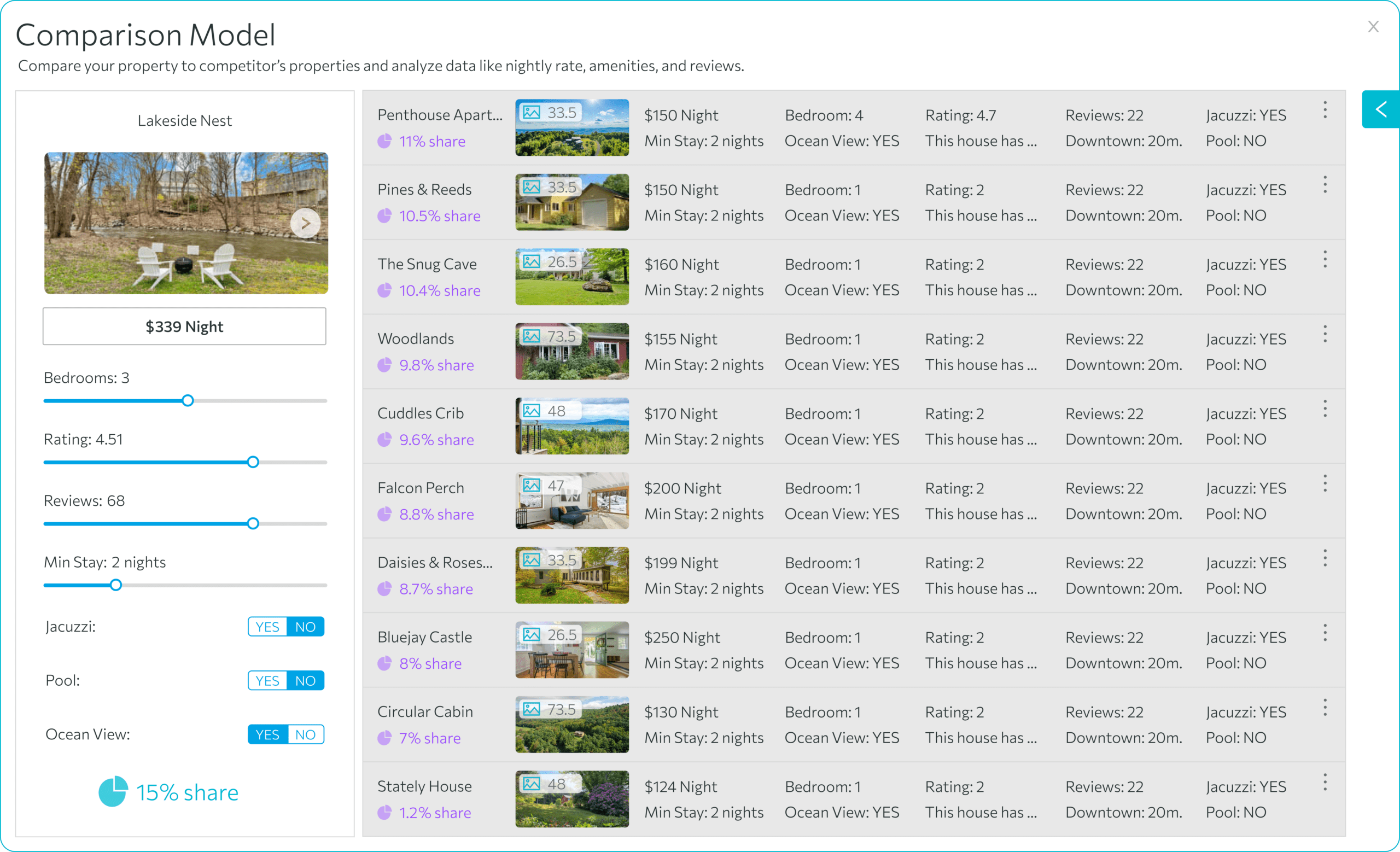
How Reviews Impact Choice
Until we released this NLP model, the quibble choice model used three unique measures of quality: the review score that is associated with each listing, the review count for each listing, and the image score. The reason we have included the NLP mode to interpret review data was primarily due to the impact of negative reviews.
We were seeing a consistent pattern with our customers. They would have a property that had very consistent intakes historically and had stopped taking bookings. We went through the listing and checked the pricing, availability, distribution, and review scores without resolving the issue. The cause turned out to be that the most recent written review had been very negative.
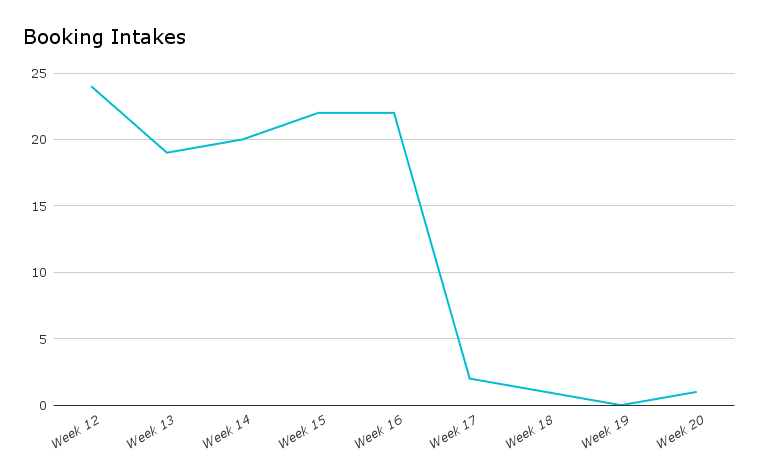
It is very common in the booking flow for consumers to check some of the recent reviews before they make their purchase. A very negative review, especially if it is in the last 3 reviews, is very likely to stop bookings in the short term. There are a few ways to address the bad written review problem. You can dispute the review if it was inaccurate, you can look to improve other areas of the listing to offset the negative impact of the review, or you can lower the price to stimulate bookings. From a software perspective, quibble helps managers address the latter two issues. The choice model recommends listing level improvements to address anything that could be improved. But, before we deployed the NLP model and integrated it into our pricing model the users would have to manually address the pricing.
Results, Limitations, and Competitors Reviews
The unfortunate part of the story is that good-written reviews don’t seem to have the same positive impact that negative reviews do. We do not see a significant increase in bookings after a very positive review. So the primary purpose of the NLP model integration is to mitigate the drop off in booking intakes after a negative review is written.
What we have seen in the testing is that the impact of the negative review is still negative on the rate of the intakes. The benefit of integrating this model is that the negative impact is not as deep and does not last as long when the model takes the review into account when setting a price.
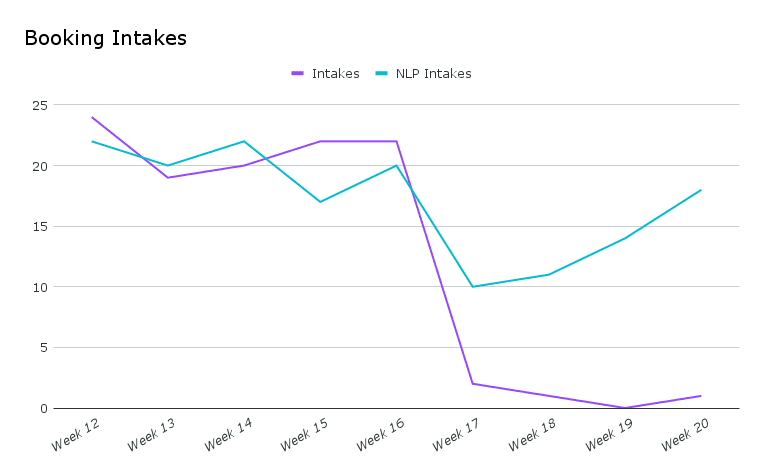
When people read reviews, they normally look at the first 3-5 reviews in the list of most recent reviews. The NLP model focuses only on these reviews and there are two reasons for that. First, those are normally the only ones people read and therefore the only ones that have an impact on the choice they will make. Second, we do not want the model discounting rates after the negative review gets pushed down. The goal of the model is to mitigate the effect and then return the rates to what they were.
“We do not want the model discounting rates after the negative review gets pushed down. The goal of the model is to mitigate the effect and then return the rates to what they were.”
There is an ancillary benefit to running this model and specifically feeding the data into the quibble choice-based pricing engine. Our primary focus is setting the revenue-maximizing rate for the listing that is being priced by quibble. The way the model works is that it uses an automated intelligent search function to find your competitors (IntelCompSet). The model doesn’t just track your reviews, it tracks all of the reviews for the IntelCompSet, your very refined list of competitors. When they receive new reviews, those are captured and rated by the model. Inevitably your competitor will receive a negative written review, which will result in them losing market share. The model can calculate the drop in share and readjust your price based on the reduced probability of your competitor getting selected in the next shopping session.
💎 Conclusion
At quibble, we think human behavior is very hard to predict, not impossible, but very hard. To move from good to great, we need to better understand the variables driving human choice. Advanced technology like NLP can improve our predictions and therefore improve our ability to price correctly. When you work in pricing and revenue management, people always think, “Oh, you are the reason that stays, flights or rides are so expensive.” That is true, but we are also the reason that all of those things are discounted as well. In this particular case, the correct move is to discount the property to prevent it from stalling out.
To learn more about how NLP can improve your pricing, contact a quibble implementation specialist.

